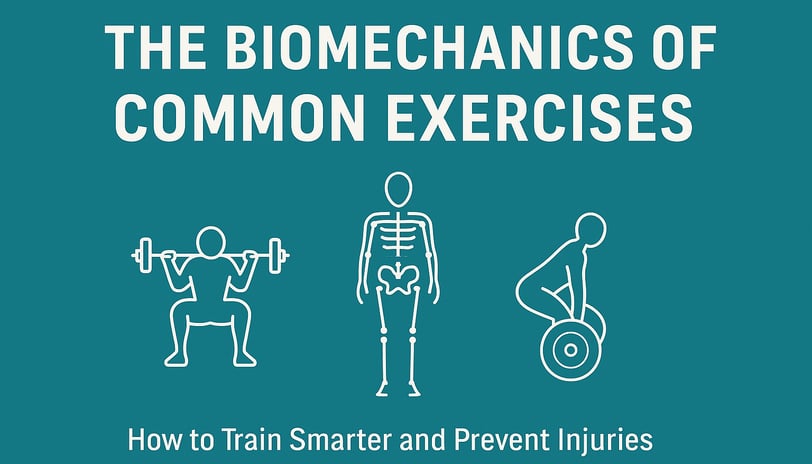Biomechanics of Squats & Deadlifts: Lift Smarter, Prevent Injury, Build Strength
Master the mechanics of squats and deadlifts to train smarter, reduce injury risk, and improve performance. Learn key movement cues, expert tips, and must-have tools that support safe and effective lifting.
5/18/20252 min read


The Biomechanics of Common Exercises: How to Train Smarter and Prevent Injuries
Strength training has incredible benefits, but if you don’t understand how your body moves under load, you’re more likely to end up sidelined with injuries. That’s where biomechanics comes in—it’s the science behind how your muscles, joints, and bones interact during exercises like squats and deadlifts.
Whether you're just getting into lifting or you've been training for years, mastering the mechanics of these movements can level up your performance and protect you long-term. In this article, we’ll break down the movement patterns, explain what’s really happening inside your body during each rep, and give you simple cues and tools to lift more efficiently.
Why Biomechanics Matter
When you lift heavy without understanding alignment and leverage, it’s easy to overload the wrong muscles—or worse, put excess pressure on your joints. Squats and deadlifts are fantastic compound movements, but they're also two of the most misperformed exercises out there.
Biomechanics helps you:
Engage the correct muscles
Improve range of motion and joint health
Minimize compensations that lead to injuries
Train more effectively with better posture and core stability
Understanding how your hips, knees, and spine work together can change the game for your strength and longevity.
Squat Mechanics 101
The squat is a foundational movement that hits your quads, glutes, hamstrings, and core. But many lifters compensate due to poor mobility or weak muscle activation.
When performed properly:
The hips hinge back while the knees bend and move forward over the toes
The spine stays neutral, with a strong core brace
The chest remains upright without overextending the lower back
Your weight stays evenly distributed between the heel and midfoot
A common issue here is poor ankle mobility, which can limit depth and cause your torso to lean too far forward. A small adjustment can help a lot:
Product we recommend: Squat Wedge Blocks
Non-slip heel wedges help you squat deeper and stay upright by improving ankle range. Great for better form and balance.
Available on Amazon
Deadlift Breakdown: Get the Hinge Right
Deadlifts are all about the hip hinge. That means the movement should come from driving the hips back—not bending at the waist.
Key points to watch for:
Keep the bar close to your body
Hinge at the hips, not the spine
Brace your core and lock in a neutral back position
Engage the lats and drive the floor away with your legs
If you struggle with bar placement or discomfort during squats and hip thrusts, this small accessory can make a big difference:
Product we recommend: Barbell Pad
Reduces pressure on your shoulders and hips so you can focus on proper posture and bar path.
Available on Amazon
Injury Prevention Tips from the Experts
Dr. Andrey Simeonovski, a physical therapist who works with athletes, recommends focusing on mobility first—especially in the thoracic spine, hips, and ankles. Tight or immobile joints force your body to compensate elsewhere, increasing your injury risk.
He also emphasizes proper core bracing. If you’re lifting heavy and struggling to stay stable, using a belt can help you create the pressure you need to protect your spine:
Product we recommend -Lever Lifting Belt
A solid leather belt helps you brace better and lift safer under heavy loads.
Available on Amazon
Final Thoughts
Understanding the biomechanics of squats and deadlifts doesn’t just help you avoid injury—it can dramatically improve your strength gains, posture, and longevity in the gym. Start with your form, use feedback like mirrors or video, and bring in tools that support better movement when needed.
Train smart, stay safe, and lift with intention.
FITNESS
Nutrition
WellnesS
info@movebetterco.com
© 2025. All rights reserved | Privacy Policy | Terms & Conditions